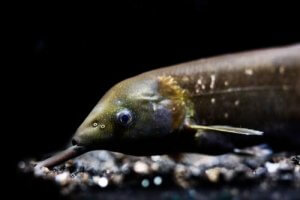What Are Electric Fish?

Since long before humans invented electricity, electric fish have fascinated scientists. Humans have been aware of their existence since Roman times, and often used their electric charges for therapeutic purposes.
There are many species of fish that use electricity in their day-to-day lives. This tool has a range of different uses: self-defense, hunting, a substitute for sight, and to allow themselves to swim in dark or murky waters.
This is a useful tool that many fish have developed over time. It gives the animal a huge advantage over its rivals, and as a result, electric fish have flourished all over the world.
What are electric fish?
As the name suggests, electric fish are animals that can produce powerful electric charges. According to a recent study by a research team in the US, these fish have been able to convert normal muscle cells into a highly developed organ capable of producing electric fields.

As well as being useful for both hunting and deterring potential predators, this electricity is the perfect way for these fish to communicate with one another, giving them yet another advantage over rival species.
The electricity itself actually comes from the animal’s muscles. Every muscle cell is able to generate electricity. However, in the case of these fish, their cells have lost their ability to contract.
Known as electrolytes, these cells are able to generate far greater tension than normal muscle cells. When all the cells work together, they can produce enough electricity to kill other animals instantly.
In some cases, such as the electric eel, the animal’s ability to generate an electric field is so great that it can produce charges more powerful than a domestic electricity supply. This ability makes them unrivaled hunters.

Electric fish can be divided into six distinct families. Although these fish have taken very different evolutionary pathways, they share a large number of genetic similarities. Where they differ most greatly is in the way they use their ability to generate electric fields. Let’s take a look at some different examples.
Some examples:
- Sharks: just above their impressive mouths, sharks have electroreceptor cells that can detect even the tiniest electric currents emitted by the animals around them. All animals emit tiny electrical signals. As such, this mechanism allows the shark to detect the position and movements of its prey, even in pitch darkness. The hammerhead is a prime example of how electric fish have evolved. Their head acts like a radar, capturing the smallest of electrical impulses to help them seek out prey beneath the sand.
- Electric rays: the electric ray’s receptor system is very similar to a shark’s. Its receptors allow it to track down prey, even when buried in the sand on the ocean floor.
- Eels: of all the electric fish, these amazing creatures produce the strongest electric fields. They can generate an electric charge of up to 600 volts, leaving their target paralyzed.
- Peters’ elephant-nose fish: this strange animal has a long, trunk-like protrusion on its head, which is covered in millions of receptors. This unique organ is essential to its survival; almost completely blind, it uses it to detect prey. This peculiar snout allows it to distinguish between objects and other animals, and can even allow it to determine whether an animal is dead or alive. Furthermore, these fish have an extremely large brain in proportion to the size of their body, making them far more intelligent than other species.
All cited sources were thoroughly reviewed by our team to ensure their quality, reliability, currency, and validity. The bibliography of this article was considered reliable and of academic or scientific accuracy.
EUROPA PRESS. Resuelven el misterio de los peces eléctricos. 30 junio de 2014.
- europapress.es/ciencia/laboratorio/noticia-expertos-resuelven-misterio-peces-electricos-20140630101853.html
Nergiza. Peces eléctricos: sorpresa entre aguas. Anabel, 2 abril de 2014.
- nergiza.com/peces-electricos-sorpresa-entre-aguas/
Vista al Mar. Impactantes verdades sobre animales eléctricos. 29 junio de 2014.
- vistaalmar.es/especies-marinas/peces-extranos/4059-impactantes-verdades-animales-electricos.html
This text is provided for informational purposes only and does not replace consultation with a professional. If in doubt, consult your specialist.